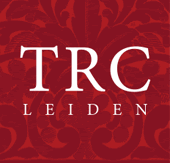One particular group of textiles that were transported along the Silk Roads were Chinese multi-coloured silk textiles that were woven with a dominant warp, whereby the weft threads remained hidden (warp-faced compound weaves). Examples of these (Chinese) textiles have been found at various sites in the Middle East, such as at Dura Europos and Palmyra, while other fragments were discovered further east along the Silk Roads in Xinjiang, western China (compare TRC 2000.0009).
Interestingly, by the 3rd century AD weavers in Central Asia developed a new, but related technique, namely that of weft-faced compound weaves (often in wool), whereby the warp threads remained hidden. This was a more versatile and easier technique for making luxurious textiles. Examples of weft-faced compound weaves in wool were excavated at Niya in western China by Sir Aurel Stein in 1900 and 1924, at the same site where he also unearthed warp-faced examples.
Weft-faced textiles soon started to be woven in both Sassanian Persia (later Iran) and in Roman Egypt, and in the opposite direction, also in China of the Tang Dynasty (618-907). They were still being woven in these countries at the end of the 20th century, nearly two thousand years after they had first been introduced (compare TRC 2019.1870).

The earliest 'western' types of weft-faced compound weaves were made of wool and cotton (Persia), and were often used as floor coverings (zilu). In the Roman Empire and later in Egypt the textiles were made from linen with wool (curtains), and wool (mattresses, bed coverings, wall hangings, cushions). These Egyptian forms continued to be made in the medieval period, as shown by finds from the mid-13th century excavations at Quseir al-Qadim and Qasr Ibrim.

It is known from written accounts and discoveries of textiles that by the 13th century the Iranian and Egyptian forms were being produced on very different types of looms. The Persian cloths were made on the large upright zilu loom, while fine silks were produced in Egypt on horizontal drawlooms. Such drawlooms were also used in India (jaala looms) for weft-faced weaves. In China, related types of weft-faced silk textiles were made on Chinese drawlooms from around the 10th century onwards.
By the 19th century items made in Iran on the zilu looms were used mainly for floor coverings, especially in public places such as mosques, while the much finer, Egyptian versions were often simply used as bed and divan coverings.


